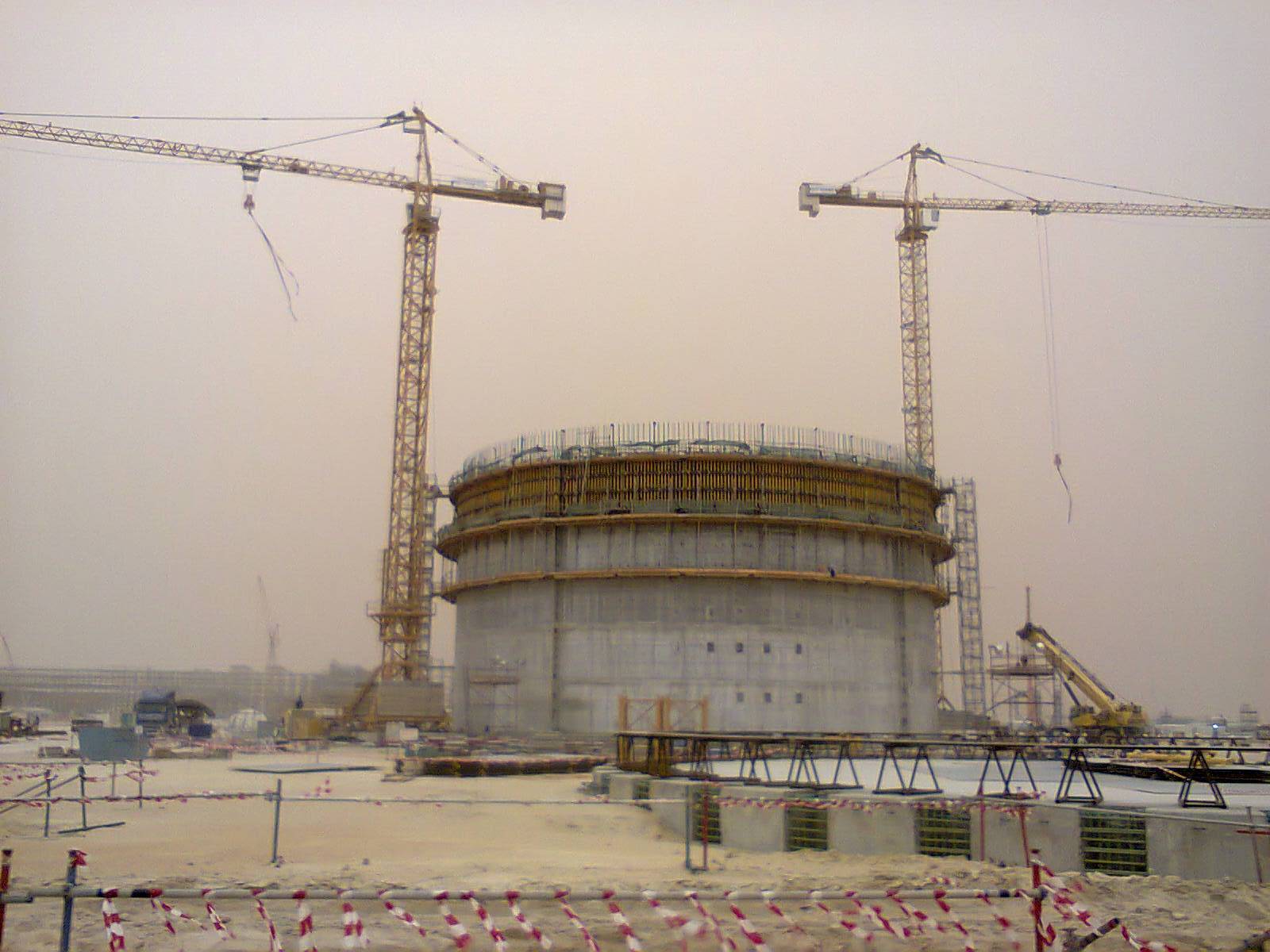Post Tensioning - Tanks & Silos
Post Tensioning- Circular Prestressing
SERVICES
Our Benefits
Feasibility studies and value engineering for tanks and silos for both the vertical structure and slab on grades
Design & detailing of post tensioning requirements
Supply of post tension plant and materials
Execution of the post tension works at site with full project and technical management, supervision and installation services
Remedial Engineering and strengthening and repair to existing post tensioned and traditionally reinforced structures
Advantages of Post-Tensioning in Tank Construction
It provides the required resistance to the acting forces;
It makes possible solutions more economic than those achievable with reinforced concrete or steel.
It renders the concrete virtually free of cracks.

Circular Prestressing” is employed to denote the prestressing of circular structures such as pipes and tanks where the prestressing wires are wound in circles. In contrast to this term, “linear prestressing” is used to include all other types of prestressing, where the cables may be either straight or curved, but not wound in circles around a circular structure. In most prestressed circular structures, prestress is applied both circumferentially and longitudinally, the circumferential prestress being circular and the longitudinal prestress actually linear.
The circumferential prestressing resists the hoop tension generated due to the internal pressure. The prestressing is done by wires or tendons placed spirally, or over sectors of the circumference of the member. The wires or tendons lay outside the concrete core. Hence, the centre of the prestressing steel (CGS) is outside the core concrete section.
When the prestressed members are curved, in the direction of prestressing, the prestressing is called circular prestressing. For example, circumferential prestressing in pipes, tanks, silos, containment structures and similar structures is a type of circular prestressing. In these structures, there can be prestressing in the longitudinal direction (parallel to axis) as well. Circular prestressing is also applied in domes and shells.
The circumferential prestressing resists the hoop tension generated due to the internal pressure. The prestressing is done by wires or tendons placed spirally, or over sectors of the circumference of the member. The wires or tendons lay outside the concrete core. Hence, the centre of the prestressing steel (CGS) is outside the core concrete section. The hoop compression generated is considered to be uniform across the thickness of a thin shell. Hence, the pressure line (or Cline) lies at the centre of the core concrete section (CGC). The following sketch shows the internal forces under service conditions. The analysis is done for a slice of unit length along the longitudinal direction (parallel to axis).
Liquid retaining structures, such as circular pipes, tanks and pressure vessels are admirably suited for circular prestressing. The circumferential hoop compression induced in concrete by prestressing counterbalances the hoop tension developed due to the internal fluid pressure. A reinforced concrete pressure pipe requires a large amount of reinforcement to ensure low-tensile stresses resulting in a crack-free structure. However, circular prestressing eliminates cracks and provides for an economical use of materials. In addition, prestressing safeguards against shrinkage cracks in liquid retaining structures.












